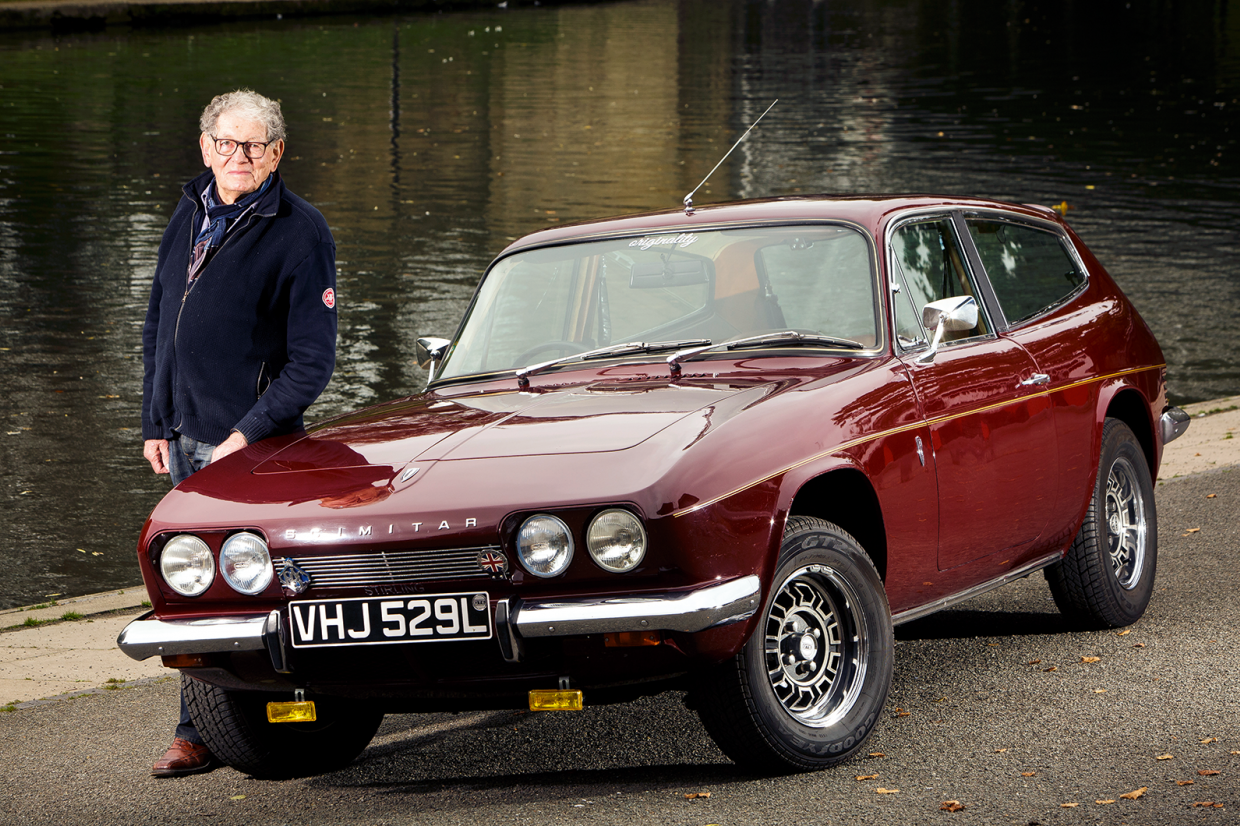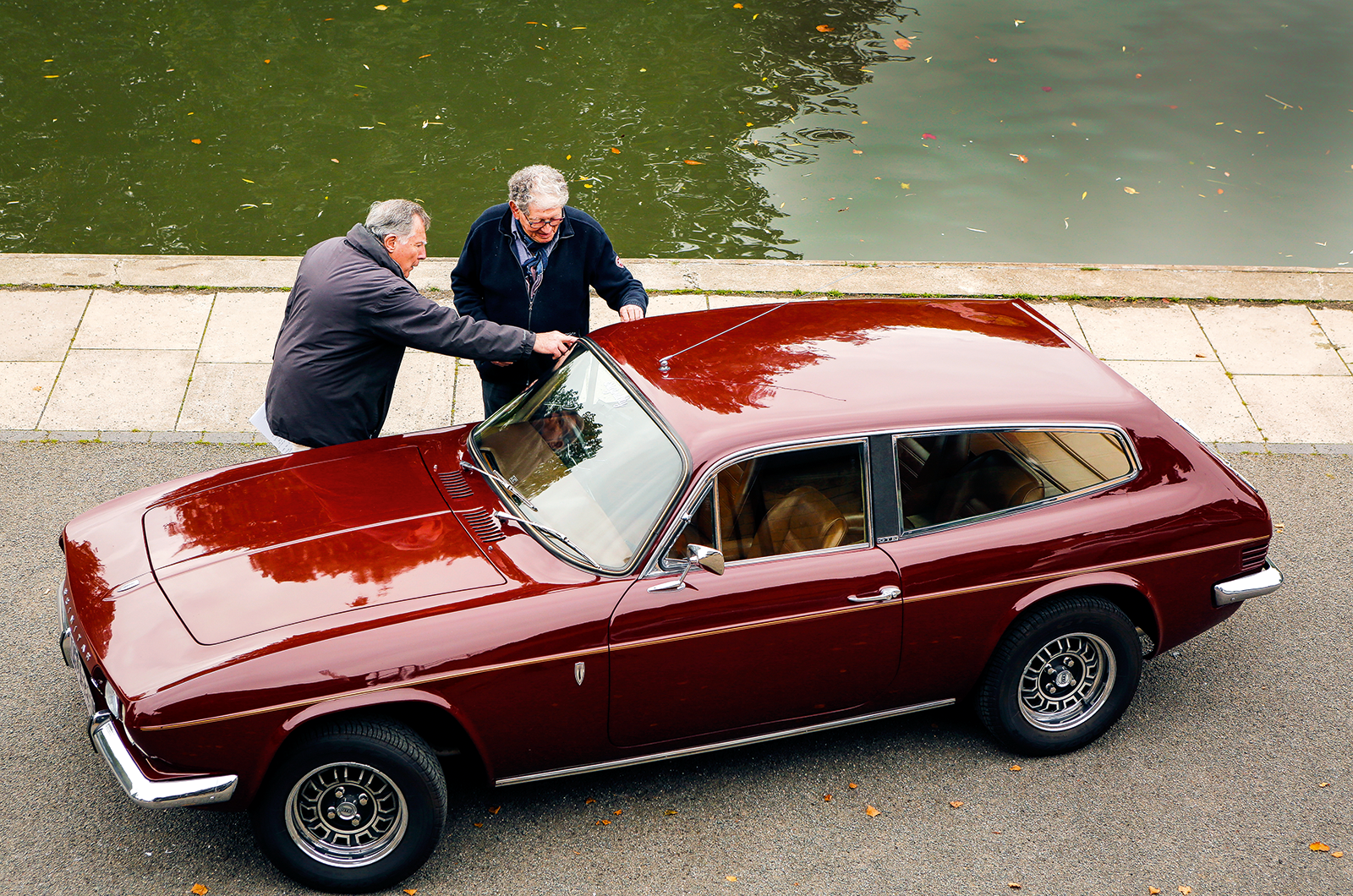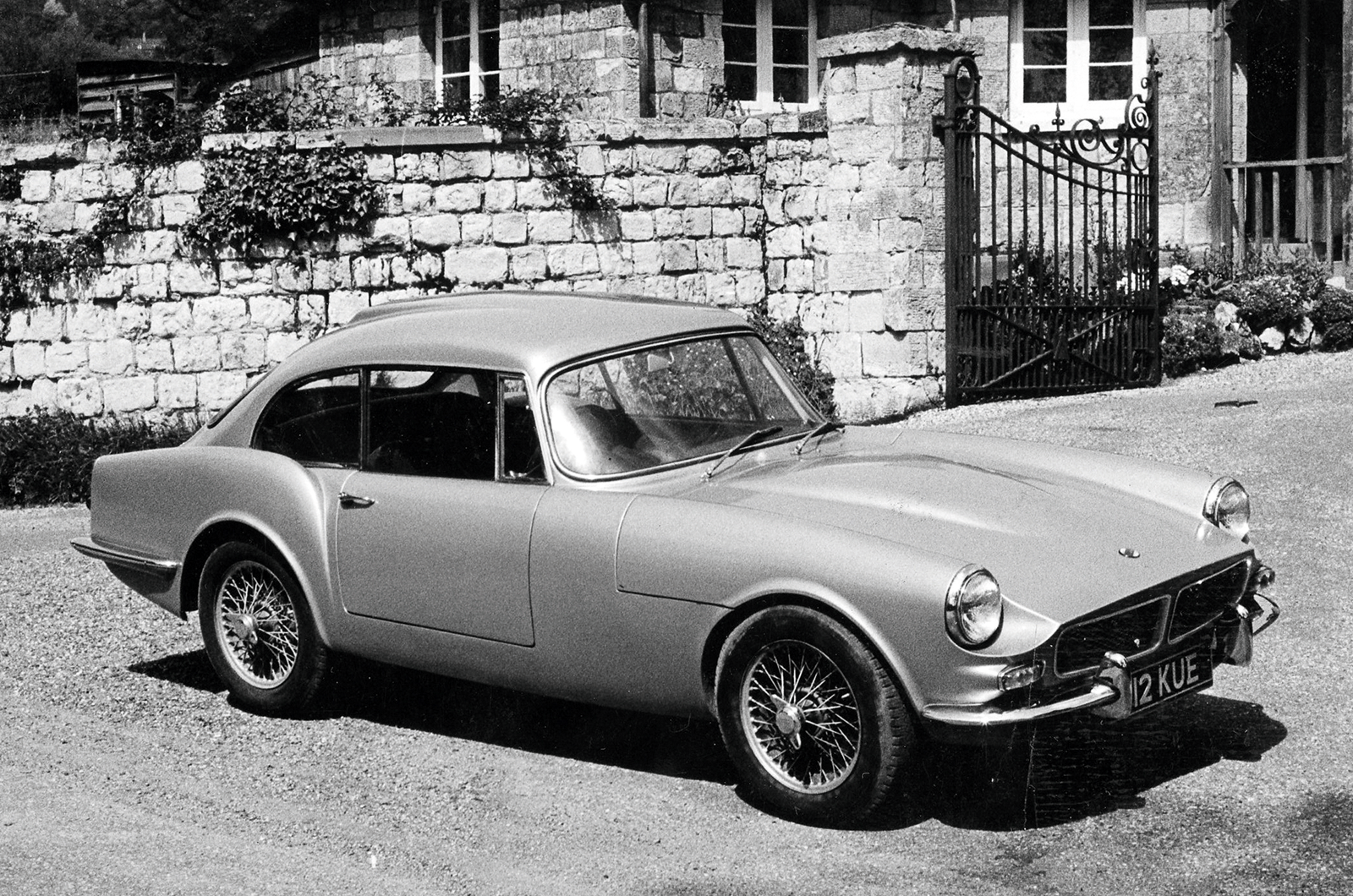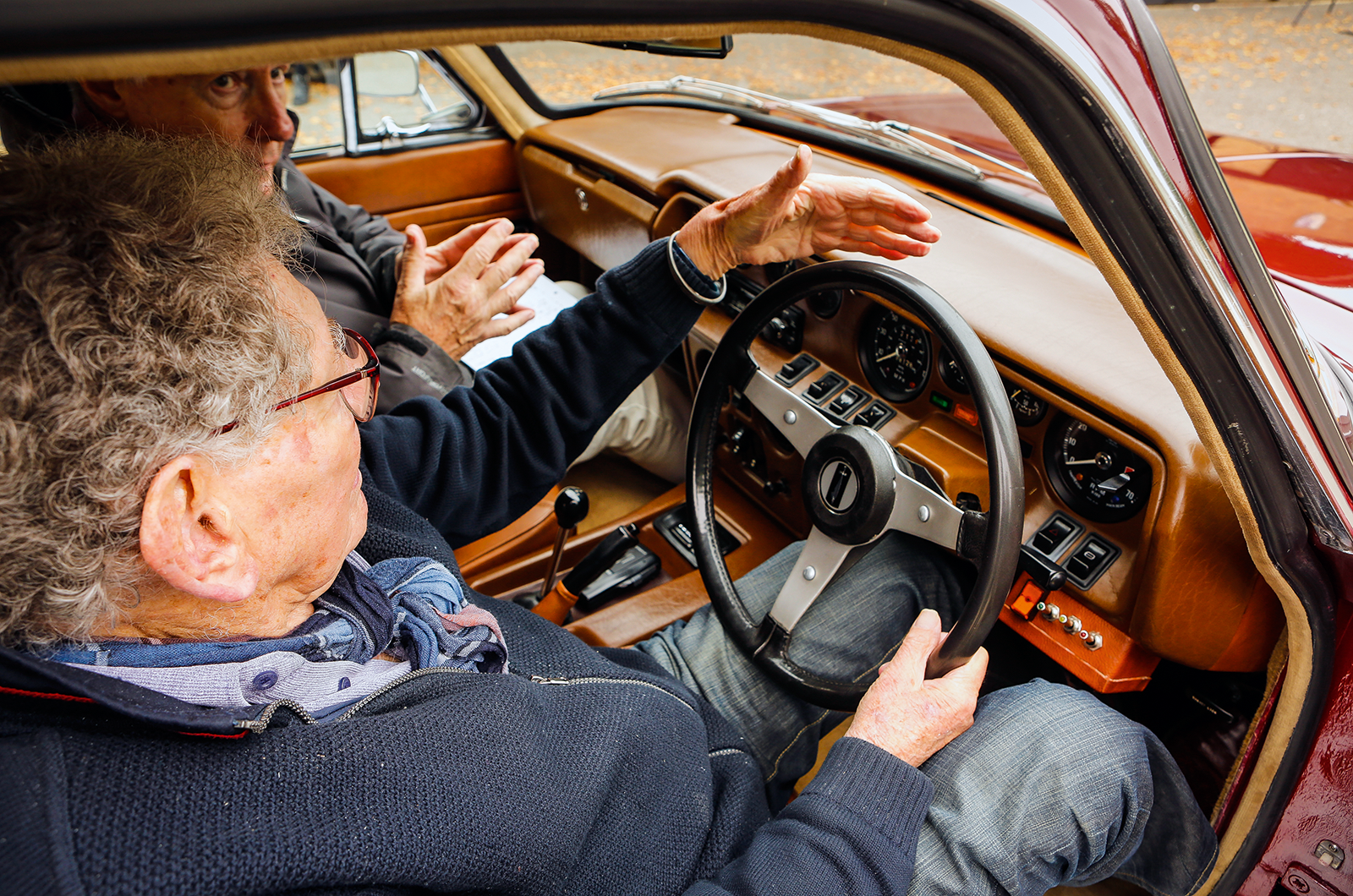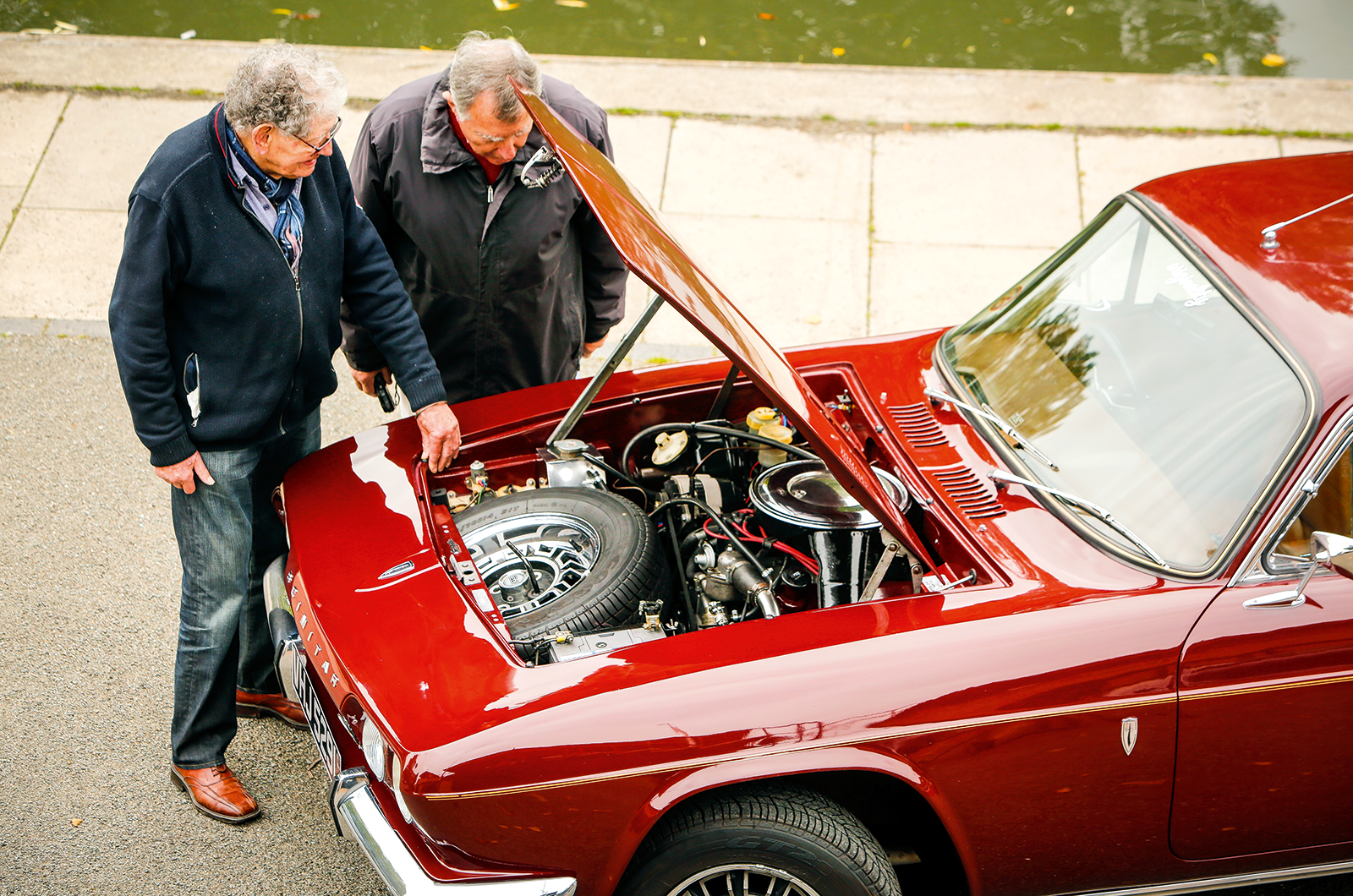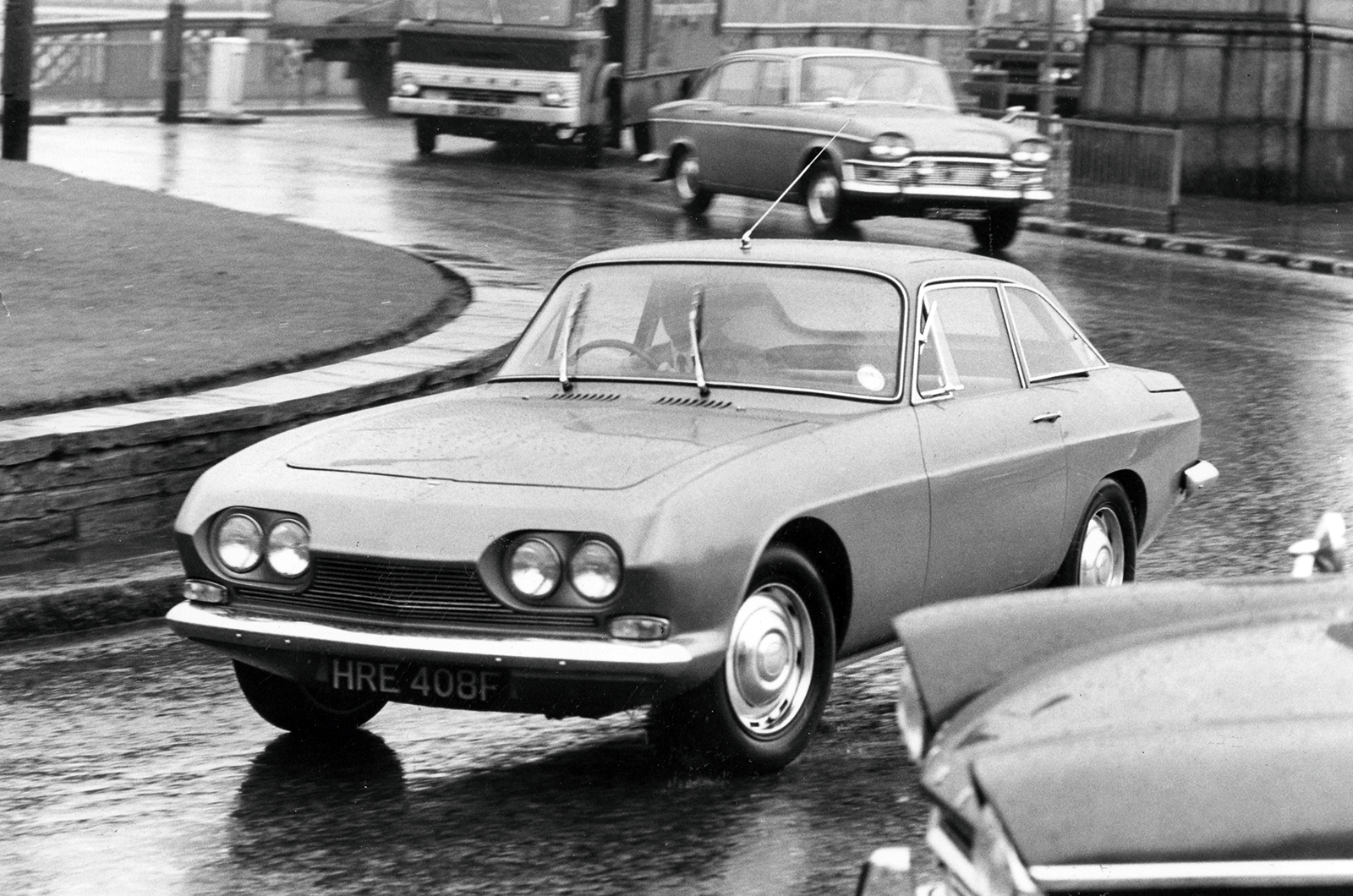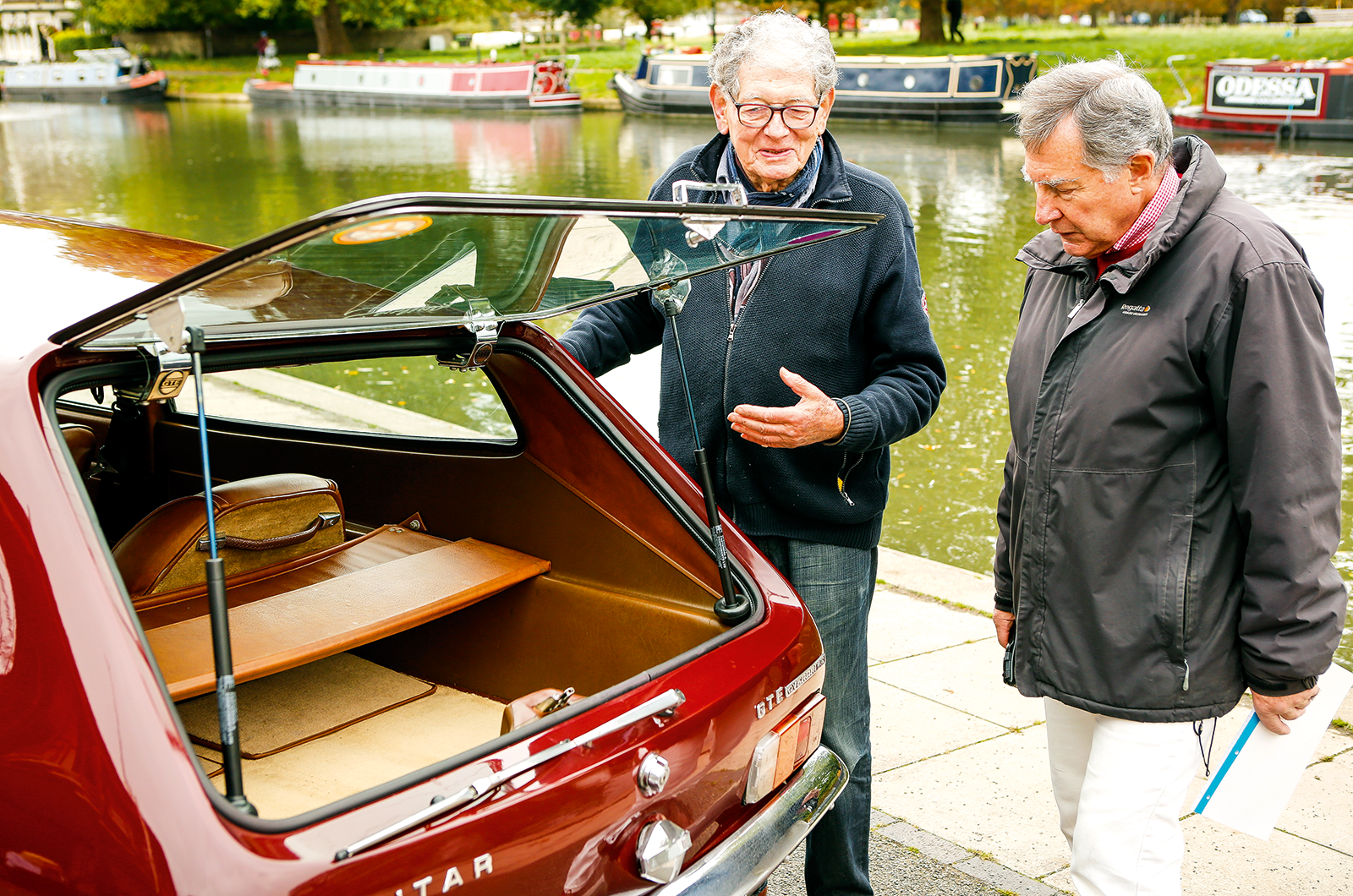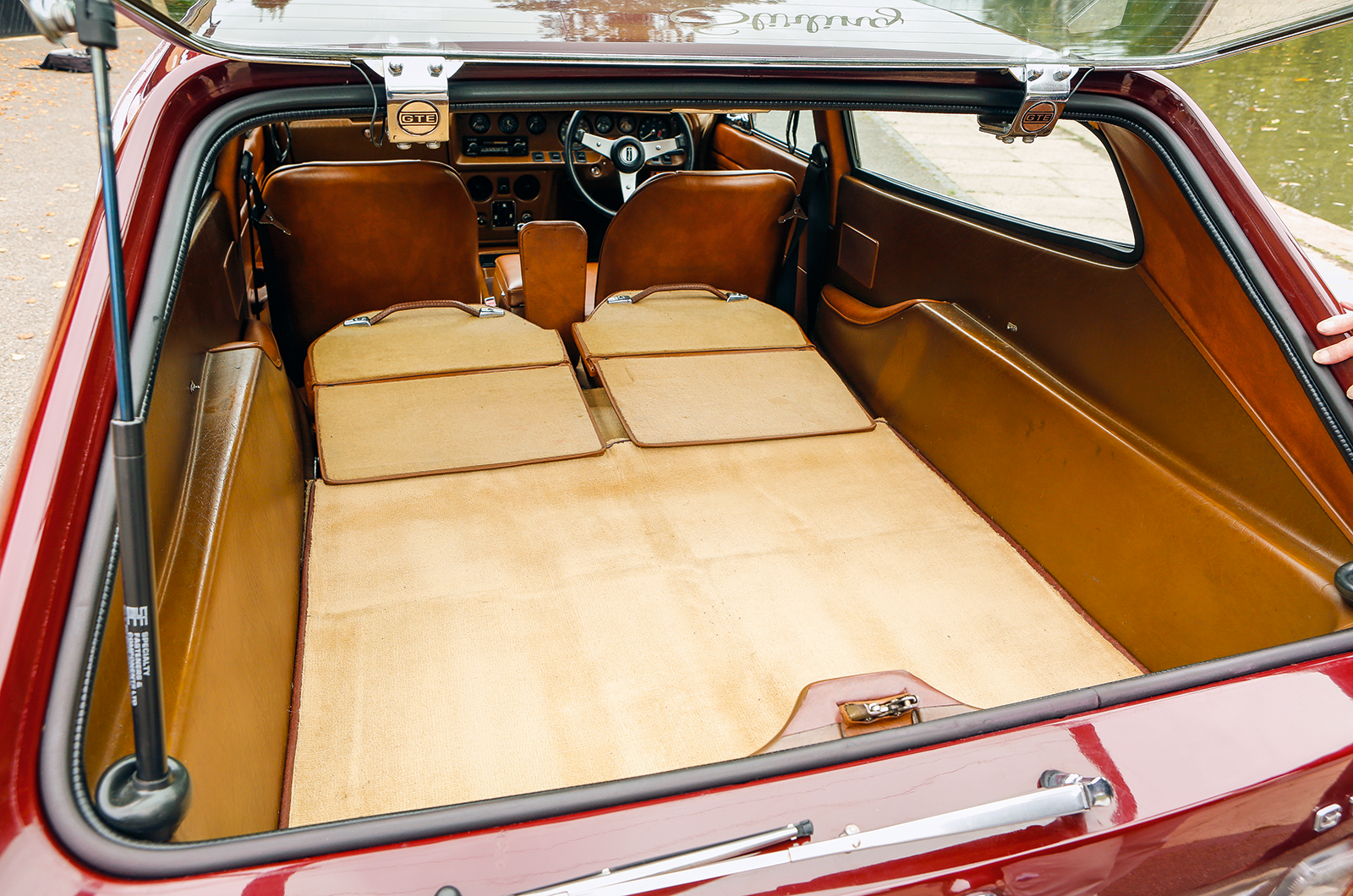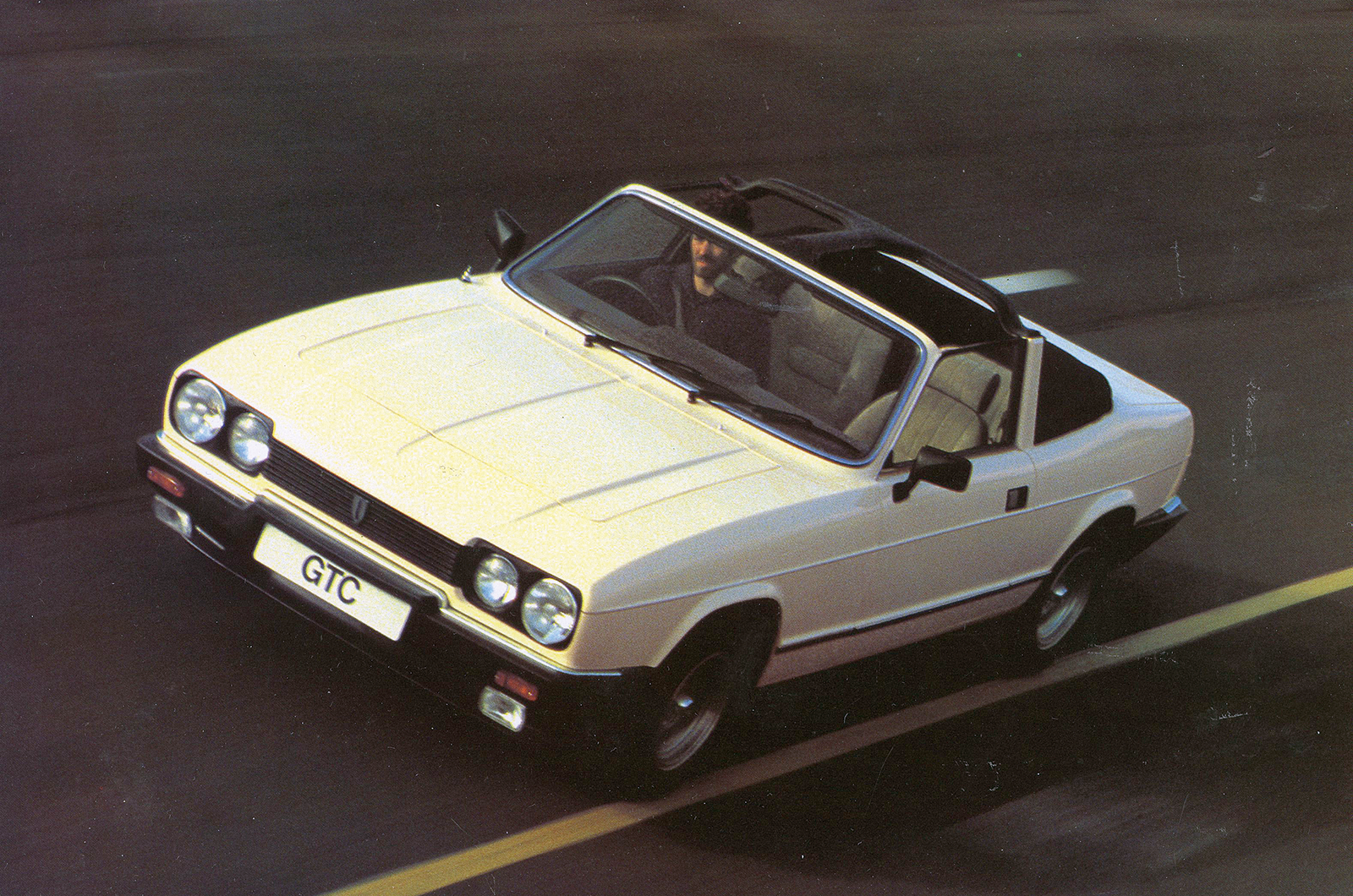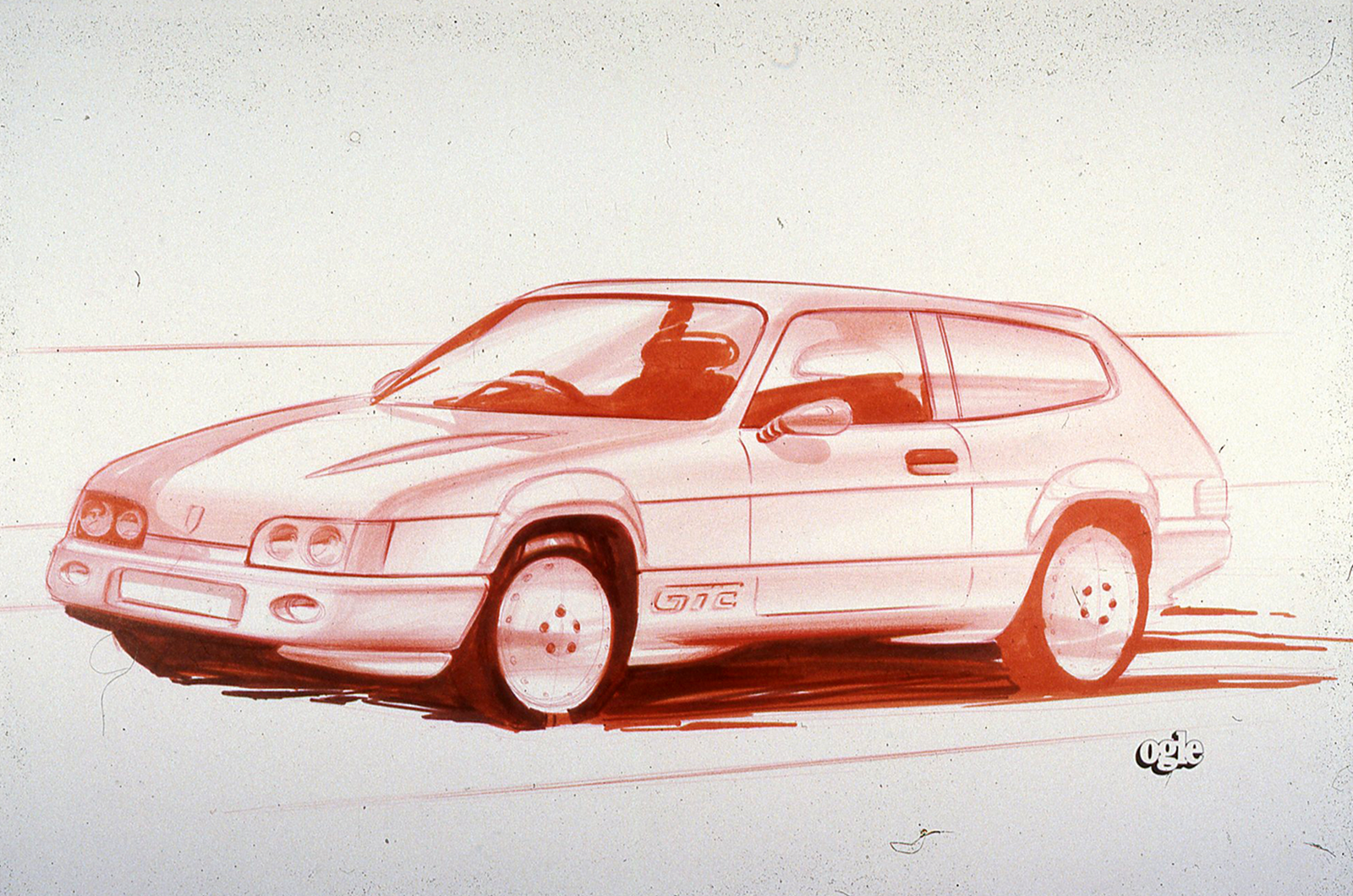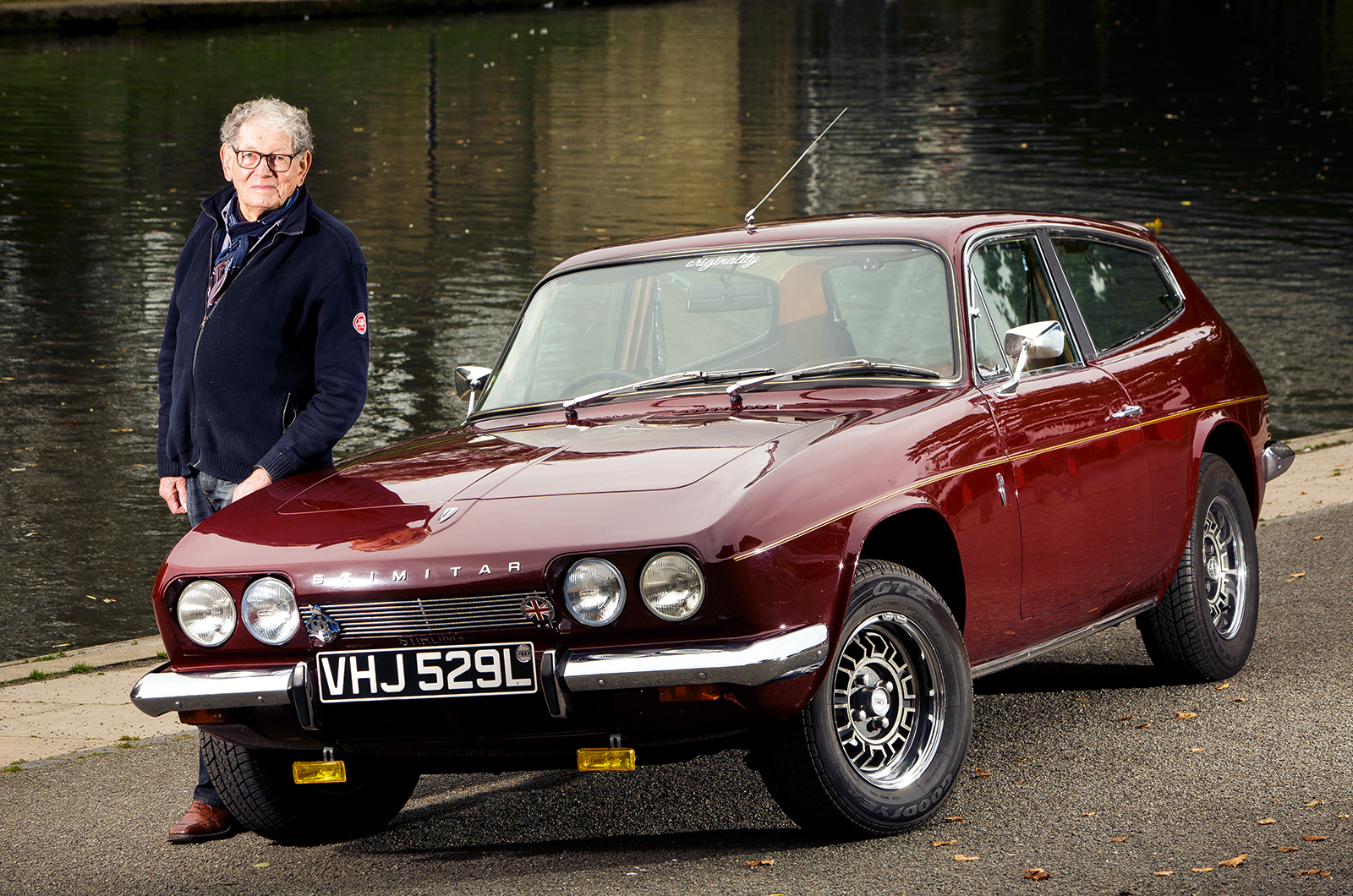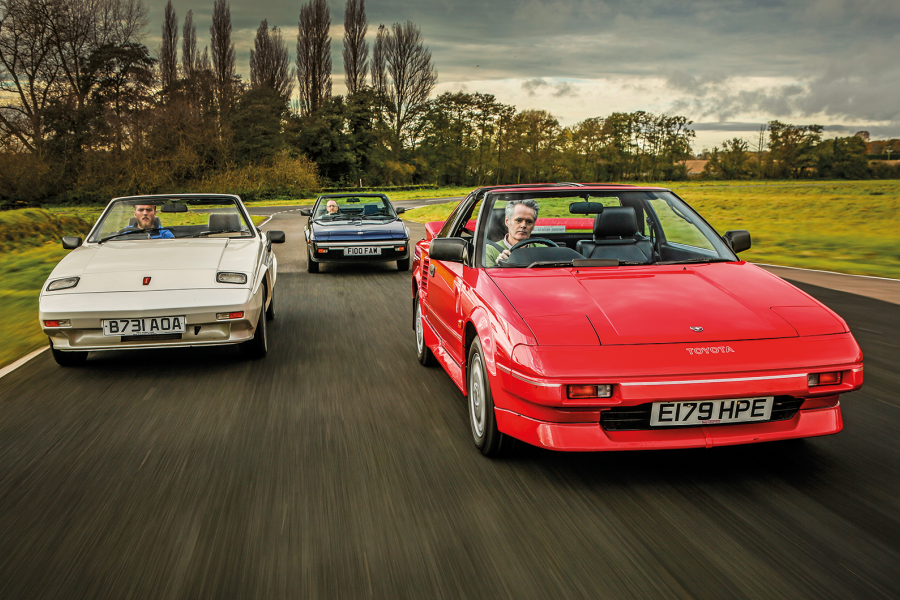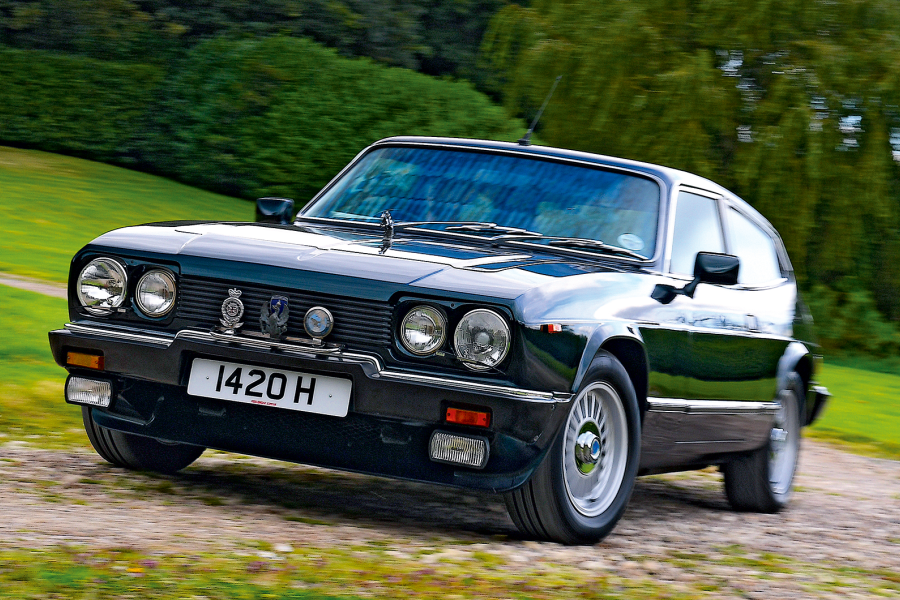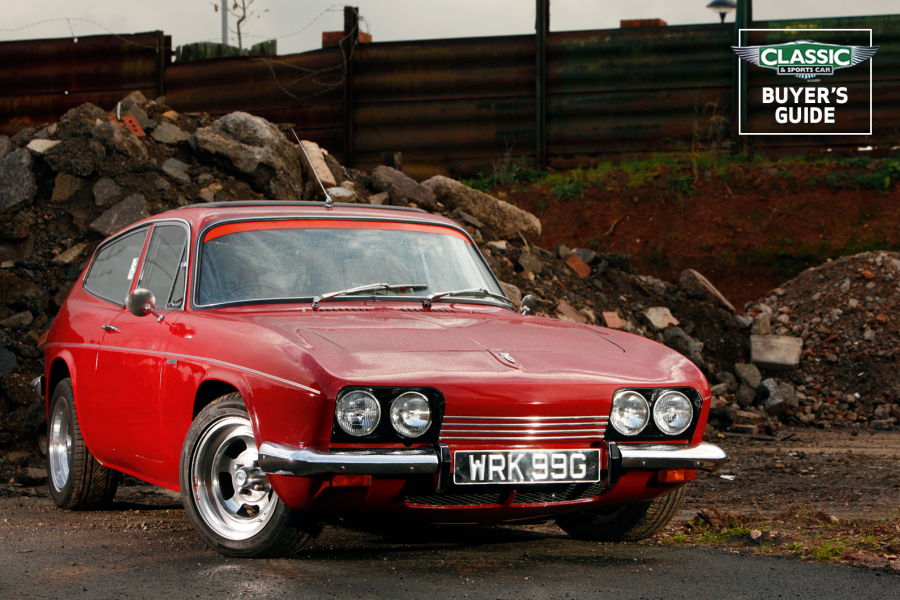Moving inside, Karen carefully considers the dials and switches: “I had an Ogle Mini SX1000, which featured a special configuration that I had designed for it. The layout for the GTE dashboard was based on my Mini. I especially like its practicality – you can see all of the instruments easily.
“Another plus point is the L-shaped arrangement with the gauges in front of the driver, plus the miscellaneous controls and air vents mounted in the centre console.
“Naturally, a lot of components were sourced from the parts bins of other manufacturers. Our speciality at Ogle was to blend them together so they looked as if they’d been made specifically for the GTE.”
As we discuss the ergonomics, Karen spots the logo in the centre of the steering-wheel boss: “We spent a long time designing that badge, the name emerging from the earlier Sabre.”
Karen’s ’86 Mk3 Scimitar GTE proposal © Tom Karen
Which brings us on to the larger, more luxurious SE6, which was launched in 1975.
“It wasn’t just a matter of increasing the body size,” Karen explains. “Quite a lot of remodelling had to be done, including the frontal treatment and the hind quarters.
“In truth, the result wasn’t quite as subtle as this version. From the outset, Reliant’s intention was to give the SE6 a stronger signature. It was certainly a more restful car to drive.”
The final iteration was the drophead GTC: “I think the idea originated from Ray Wiggin and for us it developed into yet another styling exercise. With the added strength that we had given the standard GTE model, the transition into a soft-top was made easier because the torsional rigidity was already there in the structure.”
So is there anything that he would have done differently? “There was always so much happening at Ogle Design that I didn’t spend time mulling over new ideas,” Karen laments.
The sporty shooting brake still looks fresh more than 50 years on
“Today, I’d love to have the chance to do a GTE successor. I would stick to the two-box silhouette, but I am a great advocate of low waistlines.
“In many cars, the driver’s and passenger’s heads are only just above the waistline. I think that is a great design mistake – people like to be seen just as much as they enjoy looking out.
“I would make the side windows a big feature that frames those inside. I would also add a convex bubble over the driver and passenger as a second aid to framing the upper area of the bodywork.
“Inside, I would redesign the dashboard. I am very keen on putting information such as speed in front of the driver’s eye-line to do away with the need to constantly re-focus between the road and the instruments while driving.”
Sadly, after 14,273 GTEs had been built, Reliant stopped production in 1986. Being a trendsetter always has its own shortcomings as the opposition catches up and even improves on the original.
“The Scimitar has special memories for me,” Karen concludes. “I had several as company vehicles and enjoyed them all, especially the SE6s. They were great cars.”
Words: Mike Taylor
Images: Tony Baker/Autocar
Thanks to: Mike Carr; Reliant Sabre & Scimitar Owners’ Club and Queens College Rowing Club
This feature was first published in our April 2016 magazine – all information was correct at the date of original publication
Enjoy more of the world’s best classic car content every month when you subscribe to C&SC – get our latest deals here
READ MORE
RIP Tom Karen 1926-2022
Children of the revolution: Deep Sanderson DS301 vs Ogle SX1000 vs Mini Jem vs Unipower GT
Buyer’s guide: Reliant Scimitar GTE
